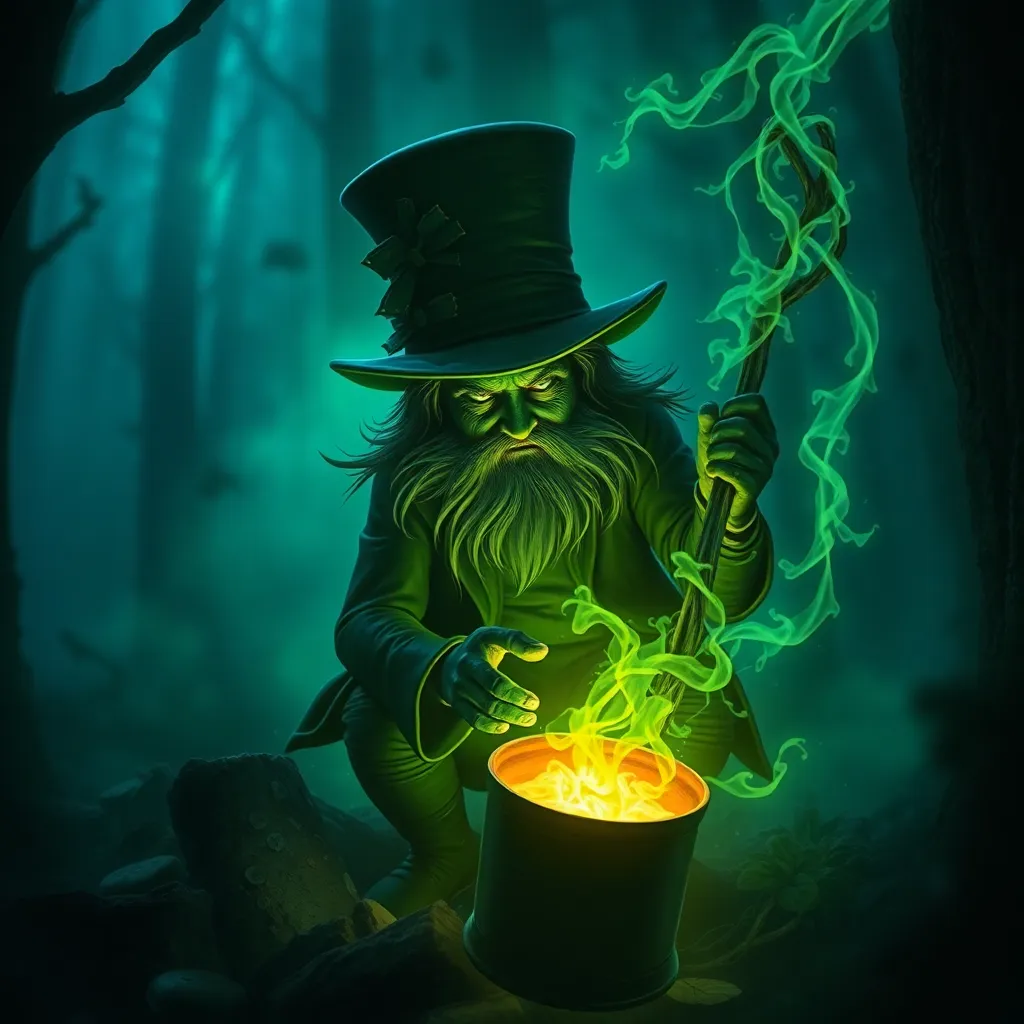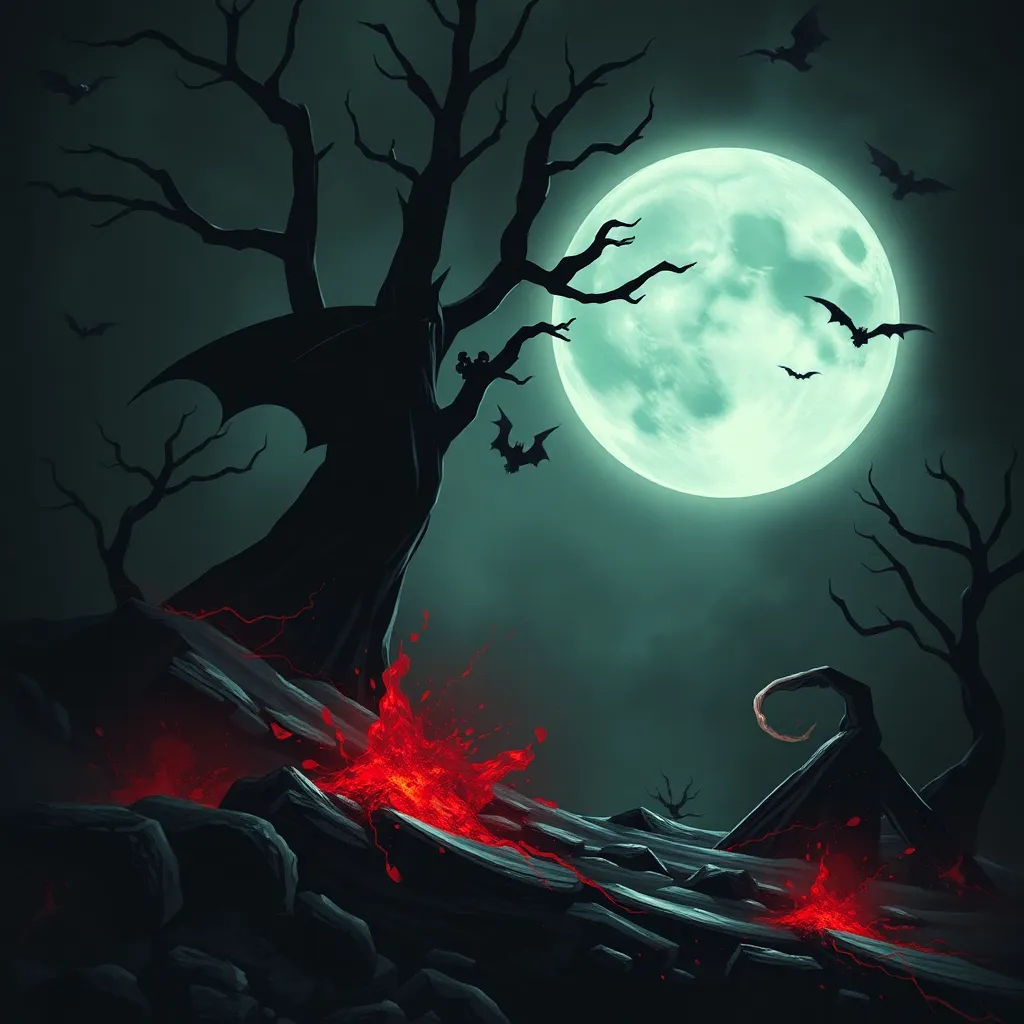The Leprechaun’s Curse: Unveiling the Darker Side of Irish Folklore
I. Introduction
Leprechauns have long been a staple of popular culture, often depicted as whimsical little beings in green coats, associated with rainbows and pots of gold. They are commonly portrayed in children’s stories, movies, and even as mascots for various brands. However, beneath this playful exterior lies a rich tapestry of folklore that reveals a darker side to these mythical creatures.
This article aims to explore the lesser-known aspects of leprechaun folklore, particularly focusing on the notion of the leprechaun’s curse. By delving into the origins, characteristics, and implications of this curse, we can uncover the complexities of leprechaun mythology.
II. The Origins of Leprechaun Mythology
The leprechaun’s origins can be traced back to ancient Irish mythology, where they were often seen as solitary fairies or cobblers. Historically, these beings were known as “lobaircin,” a term that translates to “small body,” reflecting their diminutive stature.
Over the years, the image of leprechauns has evolved significantly. Initially viewed as malevolent spirits, they gradually morphed into the lighthearted figures we recognize today. This transformation has resulted in a stark contrast between their playful image and the darker interpretations that linger in folklore.
III. The Nature of the Leprechaun’s Curse
The leprechaun’s curse is defined by a series of unfortunate events that befall individuals who encounter a leprechaun, particularly those who succumb to greed or attempt to capture them. These curses are characterized by:
- Unforeseen misfortune
- Loss of wealth or possessions
- Psychological torment and anxiety
Numerous tales and anecdotes within Irish folklore illustrate the curse’s impact. For instance, one story tells of a greedy man who, after capturing a leprechaun, was cursed to lose everything he valued, including his family and friends. This reflects the psychological implications of encountering a leprechaun, where the temptation of wealth often leads to dire consequences.
IV. Tales of Misfortune and Woe
Throughout Irish folklore, there are notable stories of individuals who have been cursed by leprechauns. One such tale involves a farmer who, in his greed, attempted to steal a leprechaun’s pot of gold. In retaliation, the leprechaun cursed him, leading to a series of crop failures and financial ruin.
These stories often highlight recurring themes, including:
- The dangers of greed
- The inevitability of retribution
- The fragility of human fortune
The role of greed and temptation is central to these narratives, serving as a cautionary reminder of the consequences that accompany the pursuit of wealth without regard for morality.
V. The Symbolism Behind the Leprechaun’s Curse
Leprechauns serve as complex symbols within Irish folklore, representing both wealth and mischief. Their association with gold and treasure paints them as figures of desire, yet their curses reveal the potential pitfalls of greed.
The leprechaun’s curse can be interpreted as a cautionary tale against avarice, illustrating how the relentless pursuit of wealth can lead to one’s downfall. In Irish society, this cultural significance is deeply ingrained, reflecting communal values and the importance of moderation.
VI. Modern Interpretations and Adaptations
In contemporary media, leprechauns are often portrayed as comedic characters, far removed from their folkloric roots. Movies and television shows frequently depict them as mischievous yet harmless beings, emphasizing their role as entertainers rather than cautionary figures.
The impact of globalization has further influenced the understanding of leprechaun folklore, as traditional narratives blend with modern interpretations. This fusion has resulted in a diluted version of the leprechaun’s curse, often overlooked in favor of lighthearted themes.
VII. Lessons from the Leprechaun’s Curse
The leprechaun’s curse conveys several moral lessons that remain relevant today. Key takeaways include:
- Greed can lead to one’s undoing
- The importance of humility and respect for cultural heritage
- Understanding the consequences of one’s actions
These lessons serve as reminders to navigate life with caution and to appreciate what one has, rather than relentlessly pursuing material wealth at any cost.
VIII. Conclusion
In conclusion, the leprechaun’s curse reveals the dual nature of leprechauns in folklore, oscillating between playful figures and ominous harbingers of misfortune. By examining the complexities of this curse, we gain insight into the cultural significance of leprechauns in Irish mythology.
As we reflect on the relevance of the leprechaun’s curse in today’s society, we are invited to explore further the rich tapestry of Irish folklore, understanding its nuances and the timeless lessons it imparts.



